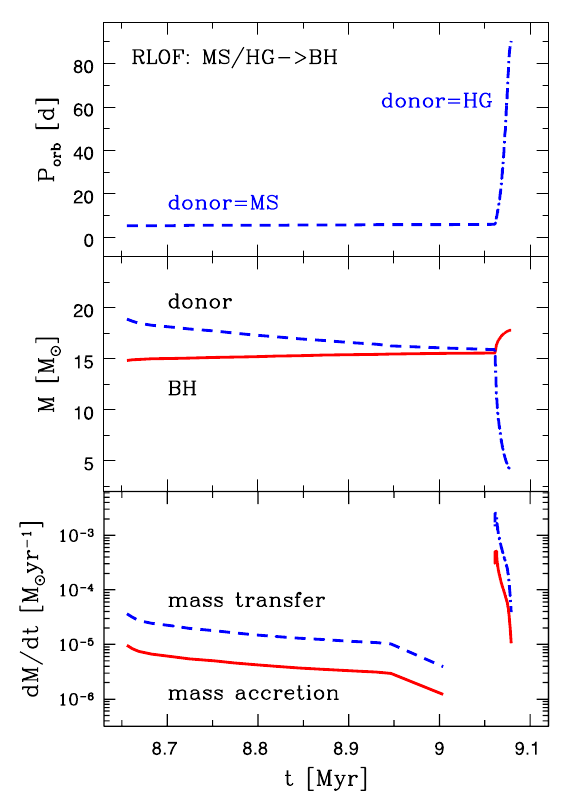Over three days this week, we’ll be celebrating this year’s astronomical awardees for the Nobel Prize in Physics: Roger Penrose, Reinhard Genzel, and Andrea Ghez.
Last week the Nobel Prize in Physics was awarded to Roger Penrose, Reinhard Genzel, and Andrea Ghez. Drs. Genzel & Ghez were awarded this prize for their work regarding the discovery of the supermassive black hole at the center of our galaxy. Bites over the last two days have detailed the lives and works of these two laureates (here & here), while today’s Bite investigates that of Roger Penrose.
Roger Penrose was born in 1931 in Colchester, England. During WWII, Roger lived in Canada before earning his undergraduate & doctoral degrees in mathematics at University College London (UCL) and St. John’s College, Cambridge, respectively. Since earning his doctorate, he has held positions at several institutions across the United States and Europe, including Gresham College, London and Pennsylvania State University. For his contributions to mathematics & theoretical astrophysics, he was knighted in 1994 and has won several accolades including the Wolf Prize for Physics. He is now Emeritus Rouse Ball Professor of Mathematics at the University of Oxford in addition to being emeritus fellow of Wadham College, Oxford.
As a mathematician by training, it is unsurprising that several of Dr. Penrose’s early academic accomplishments were not within the fields of astronomy or physics. Shown below are the Penrose Triangle (initially discovered by Oscar Reutersvärd, but popularized & independently re-discovered by Penrose & his father in the 1950s) & a Penrose tiling. If two polygons can only create non-periodic tilings, these tilings are considered Penrose tilings. The Penrose Triangle and Penrose stairs are both featured prominently in the works of M.C. Escher, most notably “Waterfall” and “Ascending and Descending.”

Einstein’s Theory of General Relativity
Dr. Penrose was awarded ½ the 2020 Nobel Prize in Physics for “the discovery that black hole formation is a robust prediction of the general theory of relativity.” To understand Penrose’s contributions, we must first understand the state of black hole science in the early 1960s.
Einstein published his theories of general relativity back in the early 1900s and, to grossly summarize, they said that gravity between objects arose from their warping of spacetime. Spacetime is a complicated thing called a “four-dimensional manifold” combining the three dimensions of space with the one dimension of time. One can think of spacetime like a sheet with objects like planets and stars as weights on this sheet; each object stretches the sheet downward. Einstein theorized that if you had an object massive enough, it could “rip a hole” (or perhaps more accurately, pinch & pull the sheet infinitely down such that it appears as a hole) in the sheet of spacetime.
Einstein’s theories and equations were certainly ground breaking to the community; they’re one of the discoveries Einstein is most well-known for! Solutions were offered, most notably by Karl Schwarzschild in 1916, but a solution on paper in a “spherical cow” universe doesn’t necessarily mean that these objects would exist in our “cow-shaped cow” universe. The search for black holes died down for a while, but was reignited with a luminous new discovery.
Quasars?
Jumping quite a few years ahead to 1963, astronomers were discovering a new class of objects — quasi-stellar objects or “quasars.” They weren’t sure quite what these quasars were (were they explosions? were they a new type of star?), but they knew they were very bright and very powerful. Some astronomers theorized that maybe these quasars were caused by matter falling onto a black hole.
Figure one from “Gravitational Collapse and Space-Time Singularities.”
Around this time, Penrose was brought into astrophysics from math by close friend (and Stephen Hawking’s PhD advisor), Dennis Sciama. Penrose became intrigued by the existence of black holes, and in 1965 published his paper titled “Gravitational Collapse and Space-Time Singularities.” In this article, he showed that no matter what, a star of sufficient mass will always collapse into a black hole, meaning that no matter how cow-shaped a star might be, a black hole will still form.
Penrose has continued to contribute to fields of theoretical physics. He developed a method of mapping spacetime; this map is called a Penrose diagram. He has offered theories on an earlier universe making it through our Big Bang leading to the idea of Conformal Cyclic Cosmology. In this cosmology, the universe goes through infinite iterations of itself with every Big Bang. He also has presented theories on the connections between human (or animal) consciousness and fundamental physics, and has published several popular science books and textbooks.
A Movie (really!)
Sir Roger Penrose is clearly very well deserving of becoming a Nobel Laureate. Black Hole astronomy has been revolutionized over the past century. In the early 1900s, they were just a hypothesis and maybe just a mathematical object. In the early 1960s, Penrose showed them to be physically possible. In the early 1990s, we discovered a black hole in the center of our own galaxy (thanks to the work of fellow 2020 Nobel Laureates Andrea Ghez & Reinhard Genzel), and in 2019, we took our first image of a black hole. Most recently astronomers have combined years of data of the black hole at the center of a neighboring galaxy, M87, to make a movie. Let’s end this bite by watching the movie and appreciating the great strides we’ve made in the study of black holes.
Astrobite edited by: Briley Lewis and Jessica May Hislop
Featured image credit: Royal Swedish Academy of Sciences / Niklas Elmehed




